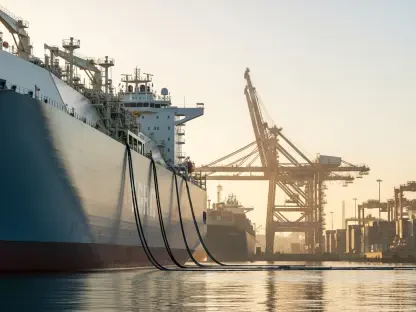April witnessed a dramatic downturn in India’s diesel exports, reaching their lowest point in over a decade. This significant reduction was largely influenced by Reliance Industries’ maintenance activities, impacting fuel supplies to Asia and Europe. Observers have noted this decline reflects broader energy market dynamics, as increased domestic demand converges with decisions on production output, with profound effects on international fuel trade.
The Intricacies Behind India’s Diesel Export Decline
The recent downturn in diesel exports highlights an emerging trend associated with India’s energy market dynamics. Historically, India has been a major global exporter of diesel due to its robust refining capacity exceeding domestic demand. However, a shift in production preferences and strategic domestic consumption priorities has recalibrated these dynamics. Increased demand within India, coupled with scheduled refinery maintenance, has altered traditional export patterns, with broader implications for international fuel markets.
Critical Factors Impacting Current Export Trends
Operational Decisions Affecting Refinery Efficiency
A prominent factor in the recent downturn involves strategic decisions made by refineries like Reliance Industries and Mangalore Refinery and Petrochemicals (MRPL). Reliance Industries’ maintenance shutdown significantly impacted refining outputs, leading to temporary reductions in export volumes. Maintenance operations are vital for long-term efficiency, yet they pose short-term supply challenges, affecting global diesel availability and pricing.
Market Shift: Preferences for Aviation Fuel Production
Refineries have increasingly shifted focus toward aviation fuel production due to its higher profit margins compared to diesel. This transition highlights refiners’ adaptability to evolving market demands, prioritizing profitability over traditional production practices. The shift underscores a broader tendency among industry players to recalibrate resource allocations in alignment with emerging market opportunities.
The Broader Impact of Regional Economic Variability
India’s fluctuating export patterns have reverberated across global markets, influencing pricing and supply chains. Variability in global oil prices and geopolitical tensions further complicate these dynamics, as India’s decisions pivot to accommodate domestic and international fuel demands. Understanding these complex interplays offers valuable insights into evolving energy markets and strategic adjustments needed to mitigate disruptions.
Assessing the Path Forward for India’s Diesel Exports
Navigating future diesel export trends requires an in-depth examination of anticipated refinery advancements and regulatory shifts. Innovations in refining technology promise enhanced adaptability, potentially addressing fluctuations in fuel demand. As India balances domestic consumption with international obligations, predictions suggest a cautious yet strategic rebound in export volumes, informed by robust policy and industry adjustments.
Strategic Insights and Recommendations for Industry Stakeholders
For industry stakeholders, the key lies in understanding current market dynamics and adjusting strategies accordingly. Emphasizing flexible refining capabilities can provide competitive advantages, accommodating fluctuations across fuel types. Businesses must strategically navigate domestic priorities alongside export opportunities, adapting to changing energy landscapes to ensure sustainability and profitability.
Reflecting on India’s Evolving Diesel Market Dynamics
The downturn in India’s diesel exports signifies a transitional phase within the global energy landscape. As India navigates evolving domestic and international priorities, stakeholders worldwide must consider these dynamics when formulating energy strategies. The need for adaptive planning and technological investments highlights a forward-thinking approach, ensuring resilient and innovative energy solutions in the face of changing market conditions.









